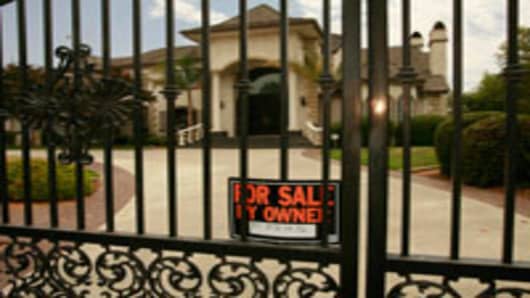Anfuso believes sales jumped for a few reasons. First, tax credits. A federal tax credit of $8,000 for first time home buyers was aided by a $10,000 state tax credit in California for buying new homes.
Why a tax credit for a new home? To keep California’s job-generating home building industry busy. But the state program is capped at $100 million, and those $10,000 credits will probably run out by June. Still, it’s been a boon for first-time buyers to be able to have a total of $18,000 in credits on a new home which they can now buy for only $190,000. Florsheim has had to slash prices that low to compete with foreclosures.
Can it make a profit? “Making money went out the window two years ago,” Anfuso says. “We’re just contributing to cash flow.” The point is to stay alive until “this market turns.” He’s not saying when that is, but new home inventory in a two mile area around his Manteca development has gone from 130 homes two years ago to 17.
More Real Estate Stories Including:
Florsheim is also staying alive by doing more than building homes. It is getting asset management contracts from banks and lenders to handle their stagnant new home developments. “We’re out there doing everything from storm drain protection to finishing (and selling) the homes,” Anfuso says. And he’s also dipped his toe back into buying land, participating in a joint venture to buy land once worth $120,000 a lot for $18,000.
The problem remains that these new homes continue to compete against a seemingly never-ending supply of foreclosures. There is both good news and bad news on that front.
“We’ve reached affordability in our market,” says realtor Kevin Moran of PMZ Real Estate. When a home is priced right, Moran says, “we get three to four offers in the first weekend on the same house.”
Prices have stabilized and inventory is down. That’s the good news. The bad news is that no one really knows how much real inventory is out there in Stockton.
Moran has a second line of work where he goes out and assesses the condition of homes for lenders who may want to rework the loans. We followed him to one such home. It was empty. The owners were long gone. “I appraise and inspect over 200 homes a month, and, anecdotally, 30 to 40 percent are vacant and the lender doesn’t know it,” he says. That means there could be a second wave of foreclosed properties hitting the market in the next five or six months. But why would someone abandon a home before they’ve even been foreclosed on? Moran pointed to the house we were looking at. The debt owed was $403,000.
A year ago, the bank agreed to a short sale, and the home went on the market for $230,000. The price was eventually lowered to $165,000, but the thing never sold. A couple of offers fell through. In February of this year, it was taken off the market, and the family just left. “There’s too many bad memories to walk in the front door,” Moran says. “A lot of people, when you stop making the payment, there’s no joy in returning home.” So they leave, and it takes the banks months to figure this out, and months more to put the home into foreclosure.
Still, Moran says the buyers are returning to Stockton, especially those who were priced out of the housing boom.
One tangible sign: there is less “foreclosure brown”. “The lawns are getting green again, and people are out in the yards,” he says. “That part of it is very encouraging.”
Questions? Comments? Funny Stories? Email funnybusiness@cnbc.com




